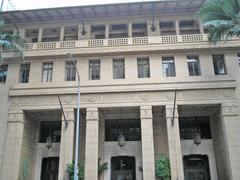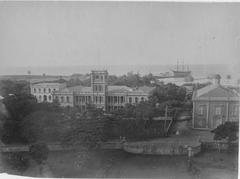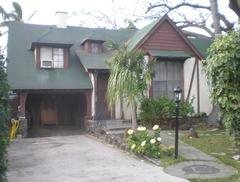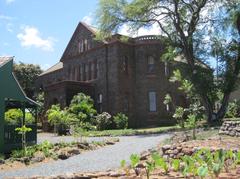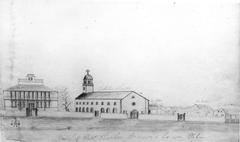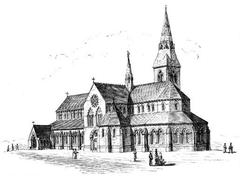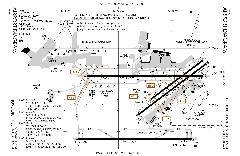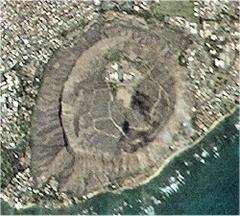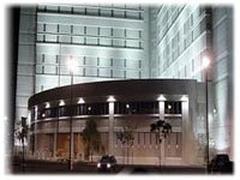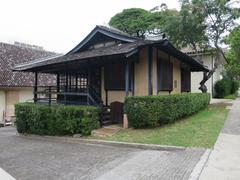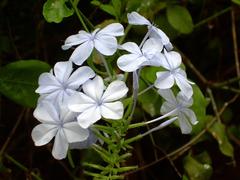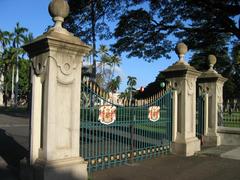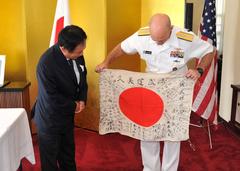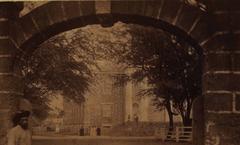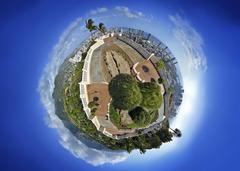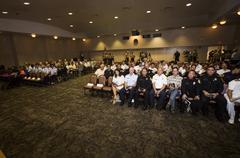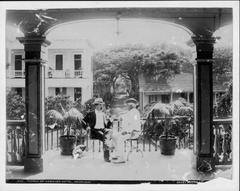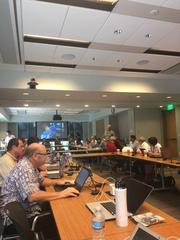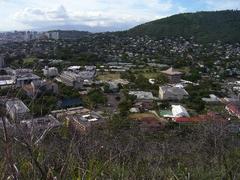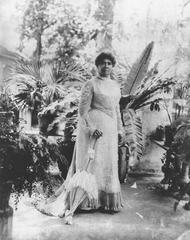
Ala Moana Beach Park Visiting Hours, Tickets, and Travel Guide: Honolulu Historical Sites
Date: 04/07/2025
Introduction: History and Significance of Ala Moana Beach Park
Ala Moana Beach Park is a treasured urban refuge in Honolulu, seamlessly blending natural beauty, cultural significance, and recreational variety. Situated between Waikiki and downtown Honolulu, this 119-acre park is an oasis for locals and visitors seeking relaxation, adventure, and cultural enrichment. Originally known as Kalia, the region was vital to Native Hawaiians for its fishponds and taro fields, reflecting a deep connection to both land and sea. Over the past century, Ala Moana has evolved from marshland and urban landfill into a meticulously planned public park, thanks in part to New Deal-era investments and strong community advocacy.
Today, the park is open daily—free to all—and offers a half-mile sandy beach protected by a coral reef, the iconic Magic Island peninsula, a host of sports facilities, and cultural landmarks like the Roosevelt Entry Portals. The calm lagoon waters are perfect for swimming, paddleboarding, and snorkeling, while lawns and walking paths invite jogging, picnics, and community gatherings. With its close proximity to Ala Moana Center and Waikiki Beach, and its role as a venue for major events like the Lantern Floating Hawaii ceremony, Ala Moana Beach Park stands as a living testament to Honolulu’s coastal life and multicultural heritage.
For visitor information, including hours and amenities, see Beat of Hawaii, alamoanabeach.org, and Hawaii Guide.
Table of Contents
- Introduction
- Historical Overview
- Park Layout and Features
- Visitor Information
- Activities and Events
- Accessibility and Safety
- Nearby Attractions
- Frequently Asked Questions (FAQ)
- Conclusion
- References
Historical Overview
Indigenous Roots and Early Transformation
The area known as Ala Moana Beach Park was once called Kalia by Native Hawaiians, who maintained fishponds and taro fields here (Beat of Hawaii). By the early 20th century, rapid urbanization transformed these wetlands into a garbage dump (USAMocha). In 1913, the Dillingham Dredging Company acquired the land and, through extensive reclamation projects, converted the swamp into valuable urban space (Images of Old Hawaii).
New Deal Era and Park Dedication
The 1930s brought federal investment through the New Deal, enabling city leaders to develop the site into a public park. Architect Harry Sims Bent incorporated Art Deco elements and designed key features such as the canal bridge, entry portals, and sports facilities. President Franklin D. Roosevelt dedicated the park in 1934 (Beat of Hawaii), with the name “Ala Moana”—meaning “path to the sea”—officially adopted in 1947.
Postwar Growth and Magic Island
World War II saw the park used as a military staging area. After the war, its amenities grew: sand from Keawaʻula Beach was imported in 1954 to create the wide, sandy shoreline, and additional facilities were built throughout the 1950s and 60s (Images of Old Hawaii). The man-made Magic Island, originally intended for resort development, was constructed in 1964 and later preserved as public parkland (Images of Old Hawaii).
Preservation and Modernization
Community advocacy has successfully protected the park from commercial development, ensuring public access and environmental stewardship. Recent sand replenishment projects and facility upgrades continue to preserve Ala Moana’s recreational and cultural value (Beat of Hawaii).
Park Layout and Features
Main Zones
- Ala Moana Beach: A half-mile stretch of sandy beach, protected by a coral reef, with lifeguard towers and calm waters ideal for swimming, paddleboarding, and snorkeling (alamoanabeach.org).
- Magic Island (ʻAina Moana): Man-made peninsula with a sheltered lagoon, walking paths, picnic areas, and event space (alamoanabeach.org).
- Central Lawns: Open grassy areas shaded by banyan and palm trees, with picnic tables, barbecue grills, children’s playgrounds, and public restrooms (familydestinationsguide.com).
- Sports Facilities: Tennis courts, a lawn bowling green, beach volleyball courts, and a 2.5-mile jogging loop (travelhawaiiwithus.com; mypacer.com).
- Historic Features: Roosevelt Entry Portals, Banyan Court, ornamental ponds, and Art Deco design elements (honolulu.gov).
- Parking and Accessibility: Multiple free parking lots, paved paths, accessible restrooms, and designated parking for persons with disabilities (alamoanabeach.org).
Visitor Information
Hours and Admission
- Open Daily: 4:00 a.m. to 10:00 p.m.
- Lifeguard Hours: 9:00 a.m. to 5:30 p.m.
- Admission: Free; no tickets required (hawaii-guide.com).
Amenities
- Restrooms and outdoor showers throughout the park
- Concession stands and occasional food trucks
- Picnic sites and barbecue grills (some can be reserved for large groups)
- Playgrounds, sports facilities, and jogging paths
- McCoy Pavilion for community events
Accessibility
- Wheelchair-accessible paths, restrooms, and parking
- Beach mats for easier sand access
Travel Tips
- Arrive early to secure parking, especially on weekends or during events
- Bring sun protection, water, and beach gear
- Public transportation (TheBus routes 8, 19, 20, 42) and Biki bike rentals are convenient alternatives to driving
- Dogs are permitted on leashes in designated areas, but not on the beach
Activities and Events
Beach and Water Activities
- Swimming and Sunbathing: Calm, reef-protected waters ideal for families and beginners
- Surfing: Several offshore breaks for experienced surfers; rentals and lessons available nearby (Safe Beach Day)
- Stand-Up Paddleboarding and Paddle Yoga: Calm lagoon conditions are perfect for SUP and paddle yoga classes (Medium)
- Snorkeling and Scuba: Near Magic Island, visitors can spot tropical fish and coral (Safe Beach Day)
Land-Based Recreation
- Jogging, Walking, and Biking: Scenic paved paths and open lawns, with Biki bike rentals available
- Picnicking and Barbecuing: Numerous tables and grills; arrive early on weekends
- Sports Facilities: Tennis courts, lawn bowling, beach volleyball, open fields for recreation
- Cultural Activities: McCoy Pavilion hosts festivals and events, with public art by Marguerite Louis Blasingame (Wikipedia)
Events
- Lantern Floating Hawaii: Annual Memorial Day ceremony at Magic Island (travelhawaiiwithus.com)
- 4th of July Fireworks: Major Independence Day celebration (hawaii-guide.com)
- Festivals and Concerts: Regularly scheduled throughout the year (Best of Oahu)
Accessibility and Safety
- Operating Hours: 4:00 a.m. to 10:00 p.m.; park is closed overnight
- Lifeguards: On duty daily; swim only in designated areas during operating hours
- Safety Tips: Visit during daylight, stay in populated areas, secure valuables (Travellers Worldwide)
- Rules: No alcohol or smoking; pets must be leashed; permits required for large gatherings (alamoanabeach.org)
Nearby Attractions
- Ala Moana Center: Largest open-air shopping center in the world, just across the street (thetouristchecklist.com)
- Kakaʻako Neighborhood: Trendy dining, art galleries, and weekly farmers market (Best of Oahu)
- Waikiki Beach: Iconic tourist destination within walking or biking distance
Frequently Asked Questions (FAQ)
Q: What are the park’s hours?
A: Open daily from 4:00 a.m. to 10:00 p.m.
Q: Is there an admission fee?
A: No, Ala Moana Beach Park is free to the public.
Q: Are pets allowed?
A: Dogs are permitted on leash in designated areas, but not on the beach.
Q: Are guided tours available?
A: Local operators offer walking tours focusing on the park’s history and natural environment.
Q: Is the park accessible?
A: Yes, with paved paths, accessible restrooms, beach mats, and designated parking.
Q: What is the best time to visit?
A: Early mornings and weekdays are less crowded; weekends and holidays are busiest.
Conclusion
Ala Moana Beach Park is a vibrant reflection of Honolulu’s history, natural beauty, and community spirit. With its free admission, diverse amenities, and rich heritage, the park welcomes visitors of all backgrounds to enjoy its sun-drenched beaches, cultural events, and scenic spaces. Plan your visit early, take advantage of public transportation, and immerse yourself in one of Hawaii’s most beloved coastal parks.
For real-time updates, event news, and insider tips, download the Audiala app and follow us on social media.
Visual and Interactive Elements
- [Insert high-quality images of Ala Moana Beach, Magic Island, and McCoy Pavilion with descriptive alt text such as “Ala Moana Beach Park swimming area” or “Sunset at Magic Island lagoon”.]
- [Embed interactive maps and virtual tours where available.]
References
- Ala Moana Beach Park History, Visiting Hours, Tickets, and Things to Do in Honolulu, 2025, Beat of Hawaii (https://beatofhawaii.com/ala-moana-beach-park-at-waikiki/)
- Ala Moana Beach Park Visiting Hours, Attractions, and Tips for Visitors in Honolulu, 2025, alamoanabeach.org (https://alamoanabeach.org/)
- A Complete Visitor’s Guide to Ala Moana Beach Park: Hours, Activities, and Nearby Attractions, 2025, Wikipedia (https://en.wikipedia.org/wiki/Ala_Moana_Beach_Park)
- Practical Visitor Information, 2025, Hawaii Guide and Hawaiiurlaub.de (https://www.hawaii-guide.com/oahu/beaches/ala-moana-beach-park)
- Additional references: USAMocha, Images of Old Hawaii, Safe Beach Day, Medium, familydestinationsguide.com, thetouristchecklist.com, mypacer.com, Best of Oahu, Travellers Worldwide, rove.me, hawaiiurlaub.de.










